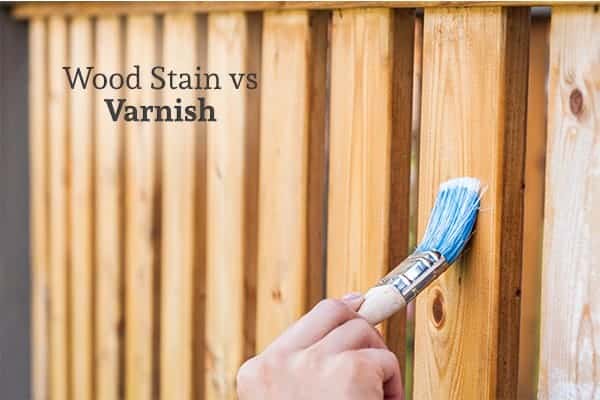Wood stain and varnish are both great tools for revitalizing your fence. They help bring out the natural color and beauty of the wood fence while alsostrengthening it and increasing its lifespan. While stain and varnish are often believed to be the same thing, they’re really two different products with different purposes. Here are the differences between wood stain and varnish, as well as the reasons why they should be used together:
Wood Stain
Wood stain is a type of paint that allows the applicant to change the appearance of the wood. It is typically used on fencing as a way to update the look of a wooden fence and add a layer of protection.
Water or Solvent Wood Stains
Water- or solvent-based wood stains are a mixture of either water or solvent with pigment that is absorbed by the wood. After application, the water or solvent evaporates, leaving behind only the pigment. The pigment can either bring out the natural color of the wood or change its look, depending on the preferences of the homeowner.
There are several advantages to using water or solvent wood fence stains:
- Dry in about 15-30 minutes
- Come in a variety of different colors
- Easy clean up afterwards
The only downside to water or solvent wood stains is that they have the potential to raise the grain of the wood. This can cause some damage to the wood or the fence over time if the stain is not applied properly. It is recommended that you add a film-forming top coat to protect the wood from damage.
Oil-Based Stain
The second type of wood fence stain is oil-based. It penetrates the wood deeper than its water or solvent counterpart, which removes the threat of the grain raising. Oil-based stains are more durable than either water or solvent stains, which eliminates the requirement of adding a film-forming top coat. A top coat can add an extra layer of protection to the wood, which is why many DIY projects still include it.
Oil-based wood fencing stains have several advantages, including:
- Can be recoated every six months to renew the finish without harming the wood
- Aids in bringing out more of the complex colors and patterns in the wood
- Doesn’t produce a hard surface when used without a top coat, which keeps the stain from cracking.
Oil-based stain is used for a more traditional finish. It gives your fence an old-school feel by bringing out the rustic beauty of the wood. The only downside to this type of stain is that it takes 72 hours to dry, so you’ll want to make sure that the weather is good for the next few days.
Varnish
Varnish is a top coat that is typically applied to a fence after a stain. It helps protect the wood and adds a professional sheen. Wood varnish is a mixture of oils and resin, and it is applied after the stain has dried. Due to the thick nature of varnish, it can only be applied using a brush.
Varnish has several fantastic qualities, including.
- Only takes about 4-6 hours to dry
- Creates a moisture-resistant shield on the wooden fence, thus lengthening its lifespan
- Makes wood appear rejuvenated
- Accents the vibrant colors in the wood, creating a sense of depth
The only downside to varnish (when compared to a lacquer finish) is that it is prone to scuffing and denting. However, unlike lacquer wood fence finish, varnish helps prevent the wood from cracking during extreme temperature changes.
You want your fence to be the talk of the neighborhood, but sometimes, just giving it a fresh coat of stain and varnish isn’t enough. If you are looking for fence replacement or a new installation, contact the experts at Rustic Fence. Our professional team can help you find the perfect style of fence for your home while complimenting it with stain or varnish to bring out the color of the wood while also adding protection.


